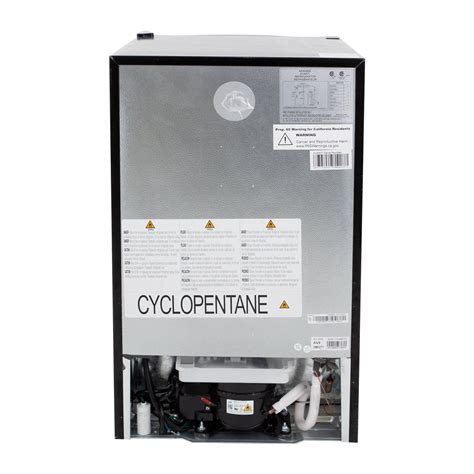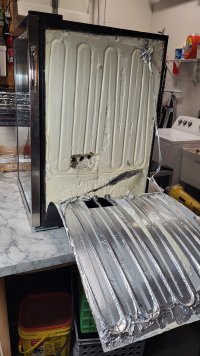Hello all. Just acquired an Avanti AR4446B Mini Fridge.
No freezer to move out of the way and dimensions will accommodate at least 1 - 5 gallon corny keg (Which I ferment in normally) as well as room for a blowoff.
I want to make this into a ferm chamber. To do this I will need to remove some of the built in door shelves and poke a couple holes for temp probe and cable for heat supply.
How do I find out where the coolant lines are so I do not make a mistake?
If there is no way to know I may just try to go above the condenser and drill through the hump part of the cooler.
Anyone know how to find out where the coolant lines are?
No freezer to move out of the way and dimensions will accommodate at least 1 - 5 gallon corny keg (Which I ferment in normally) as well as room for a blowoff.
I want to make this into a ferm chamber. To do this I will need to remove some of the built in door shelves and poke a couple holes for temp probe and cable for heat supply.
How do I find out where the coolant lines are so I do not make a mistake?
If there is no way to know I may just try to go above the condenser and drill through the hump part of the cooler.
Anyone know how to find out where the coolant lines are?






























![Craft A Brew - Safale S-04 Dry Yeast - Fermentis - English Ale Dry Yeast - For English and American Ales and Hard Apple Ciders - Ingredients for Home Brewing - Beer Making Supplies - [1 Pack]](https://m.media-amazon.com/images/I/41fVGNh6JfL._SL500_.jpg)





























